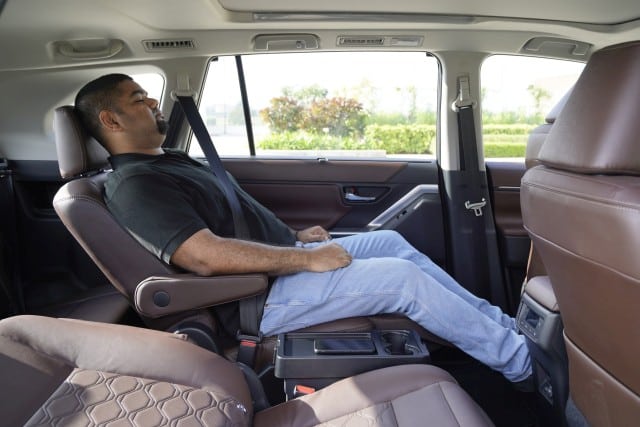
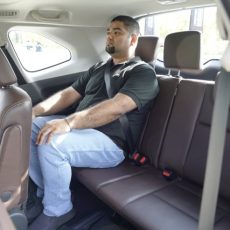
The Toyota Innova HyCross now gets Ottoman seats and makes for a lounge-like experience for rear occupants. This is for the seven-seater option, of course. The eight-seater gets a three-seat bench for both the second and third rows. This trim also has retractable sunshades in the rear doors; and makes one realise that the Innova is now a proper back-seat car and is more adept than ever at touring. It’s spacious and supportive and has a refined and quiet ride with good suspension characteristics that absorb the impact and noise of some truly horrendous road irregularities. The third row, too, is extremely spacious and, although not meant for six-footers in terms of thigh-support, it can easily accommodate three average-sized adults. Moreover, if three, four, or even five persons are travelling, the split-folding third row can be even more flexible and swallow a variety of baggage with ease.
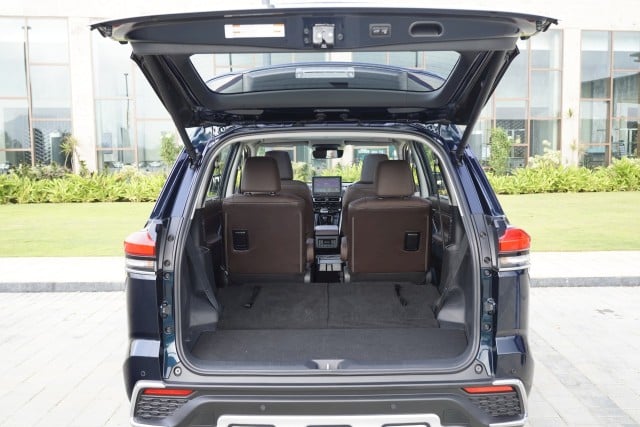
Now, on to the ride. This Toyota Innova HyCross is definitely a tourer and it has the credentials and hardware to cruiser inter-city or even inter-state with ease. The chassis is now a monocoque construction which integrates the bodyshell and powertrain; a move that has seen a 200-kg weight reduction. The powertrain is a petrol-electric hybrid and pairs the new “M20A FXS” four-cylinder petrol engine, displacing 1,987 cc and producing 152 hp and 188 Nm, with an 83-kW electric motor making 113 hp and 206 Nm, and a compact 1.37-kWh battery pack (mounted below the front passenger seat). The result is a combined 186 hp and a good punch of instant torque with support from the petrol engine. With the charge-discharge characteristics of the high-voltage battery optimised for consistent power delivery, the HyCross can run on pure electric power over 60 per cent of the time, depending on load conditions. That said, Toyota were bold enough to claim two important figures: a 0-100 km/h time of 9.5 seconds, and an overall fuel efficiency of 21.1 km/l. About to verify that, I was. Among other things.
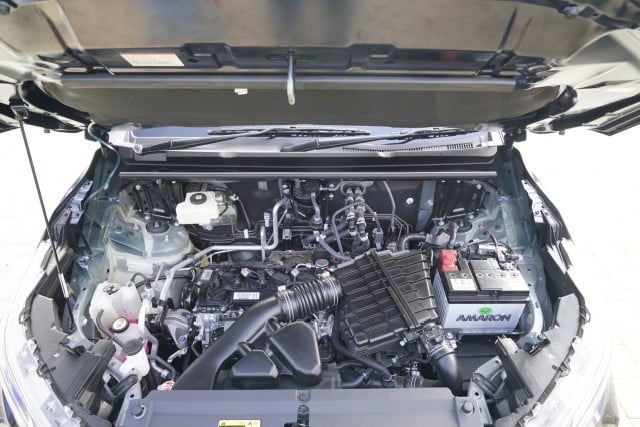
The ride quality is sorted and the Toyota Innova HyCross Hybrid feels much smaller than it really is. The wide and large exterior doesn’t feel anything of the sort and the weight is more low down too, making for rather responsive handling. The steering is light, but not overly so, and feel-some, making for a nimble nature of sorts. It can change direction swiftly and in a composed manner, being good and stable on the brakes, too, if the need to shed speed arises. The transmission is an electronically-controlled unit which engages the engine directly when needed. The peak torque comes in from 4,400 rpm so, if I plant my foot down—like most Innova users will never do—it can get rather noisy in the cabin. The HyCross is best driven in a relaxed manner, much like its larger sibling, the Vellfire. It gets drive modes, too, including Eco and Sport modes. In the normal mode I was happy to see 22.5 km/l leaving the narrow B-road and headed on to the highway where the figure climbed closer to 25 km/l. It’s smooth sailing.
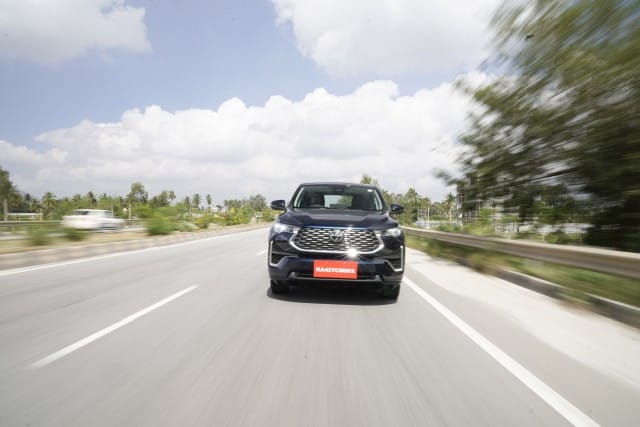
The Toyota Innova HyCross gets a slew of advanced safety features that raise the level of semi-autonomous driving assistance on offer. Toyota Safety Sense: Dynamic Radar Cruise Control, Lane Trace Assist, Blind-spot information, rear cross-traffic alert are included. It’s definitely a step-up for the segment. The adaptive cruise control (the Toyota representative himself referred to it as “ACC” so I rest my case!) is a boon on highways, with speed and distance configurable. It also has lane-keep using steering assist, backed by the pre-collision system, for when intervention is needed. Nevertheless, the systems worked well and I only needed to periodically calm the onboard computer with a nudge of the steering wheel at times.
So, then, the all-new Toyota Innova HyCross picks up where the Crysta left off. It’s refined, more spacious and a better handler with loads of tech on board. It will be pricier, too, but that’s a given nowadays. Fret not, we’re told the diesel engine will continue in the Innova Crysta with its sedate 2.4 barely breaking into a sweat at highway speed.
“Why not full-electric?”, you may ask. Well, I have said before, EVs are only as clean as the power generated that charges them. A hybrid makes better use of available resources, effectively cutting down usage of fossil fuel and employing electricity. Some may say it’s delaying the inevitable, and, well, they’re right. But until the world reaches that stage, may we find effective solutions—carbon-neutral synthetic fuel or hydrogen—that truly promote a better world. So far as clean cars go, the Innova HyCross is, thus, a big step in the right direction.
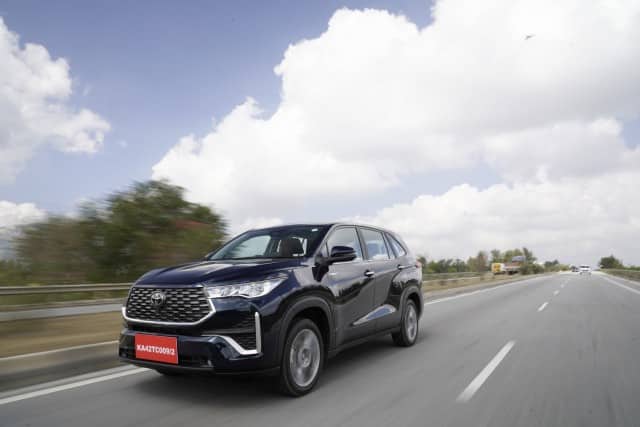
Need to Know – Toyota Innova HyCross Hybrid
Price: Rs 23-25 lakh (ex-showroom, estimated)
Engine: 1,987 cc, in-line four, petrol
Max Power: 152 hp @ 6,000 rpm
Max Torque: 188 Nm @ 4,400-5,200 rpm
Electric Motor: 83-kW (113 hp), 206 Nm
Battery Pack: 206-volt, 168-cell, Nickel metal hydride, 1.37-kWh
Combined peak: 186 hp, 280 Nm (estimated)
Transmission: Electronically controlled, continuously variable, automatic, front-wheel drive
Suspension: MacPherson strut front, torsion beam rear
Weight: 1,700 kg (estimated)


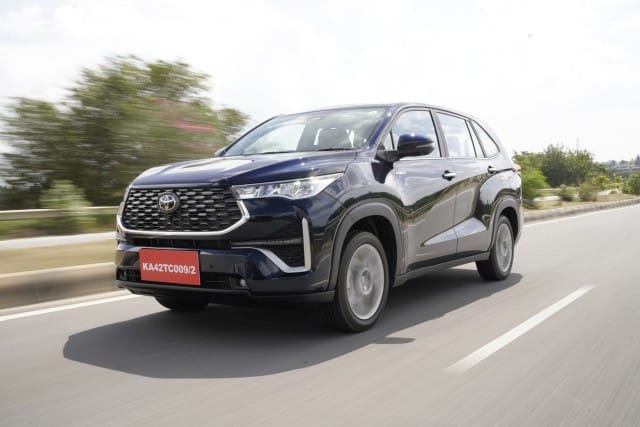


















Leave a Reply